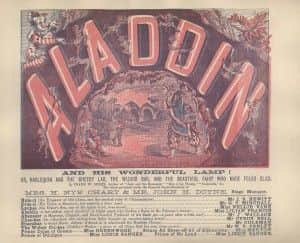The saviour of Brighton's Theatre Royal


Last time I wrote about cross-dressing star of the music-hall, Vesta Tilley.
This time it's the turn of another woman who loomed large over the Brighton entertainment scene. Step forward pioneering manager of the Theatre Royal between 1876 and 1892, Ellen Nye Chart. Ellen Rollis, as she was originally, was born a builder's daughter in working-class Islington in 1839.
Advertisement
Hide AdAdvertisement
Hide AdBy 1865 she was working as an actress and appearing on stage at Brighton's Theatre Royal. At that time the theatre on New Road was being managed by actor-turned-manager Henry Nye Chart who was attempting to pull it up by its boot strings after a disreputable period. Ellen and Henry married in 1867 but happiness was shortlived following Henry's death only nine years later aged only 55.


At this point it would have been normal and acceptable for Ellen to sell the theatre that her husband had bequeathed her.
Her son was eight years old and, as a widow, she could have faded into the background never to be heard of again. Instead, Ellen, bucking the norm for women to stay out of the cut-throat world of business, decided that she was not only going to keep the theatre, but manage it herself. Whatever doubts people may have had about whether this was an appropriate job for a woman, Ellen quickly proved herself an astute businesswoman and creative theatre manager.
She quickly launched a plethora of new ideas focused on growing the audience, and making the theatre more accessible and appealing. One of the first of these was to extend the season. Instead of offering entertainment only during the holiday season - largely for Brighton's well-heeled visitors- it became a year-round operation, making a night at the theatre a much more regular part of locals' social life. She diversified what was on offer by inviting touring companies to perform and introduced more romantic comedies and social dramas to the bill. Late Victorian popular actors such as Lily Langtry, Sarah Bernhardt, Herbert Beerbohm Tree and Henry Irving all trod the Theatre Royal's boards.
Advertisement
Hide AdAdvertisement
Hide AdFamously, Ellen introduced the annual pantomime to Brighton, a tradition still going strong.


The lavish, all-singing, all-dancing performances of the likes of Aladdin, Dick Whittington and Jack and the Beanstalk drew crowds and proved to be some of the most profitable events of the year.
Perhaps remembering her own humble background, Ellen made a point of inviting the entire inmates and staff of Brighton Workhouse to watch a special performance of the pantomime for free. In the face of some hostility from the Workhouse Guardians many of whom, of course, thought that most of the inmates had earned their place in the workhouse by laziness and feckless behaviour and didn't deserve such a treat, this was quite a struggle.
But Ellen battled on to make this a regular feature, and I'm sure her name was in the prayers of many of the thousand-plus workhouse residents at this time of year.
Advertisement
Hide AdAdvertisement
Hide AdIn 1883 Ellen pioneered the concept of the 'matinee performance'. Going one step further, Ellen's 'flying matinee', which involved the entire production, crew, actors, props and costumes of a London show catching a train to Brighton in the morning, setting up and performing in the Theatre Royal, before dismantling and catching the train back to reach London ready for the evening performance, meant that Brighton was never going to be considered a provincial back-water where theatre was concerned.
'There is scarcely a London novelty running that would not come to Brighton during the present year,' Ellen said in 1891.
As early as the 1880s, Ellen had made the Theatre Royal a highly profitable business and paid off the £6,000 mortgage that her husband had left on the Theatre and the house that she owned next door.
Locally Ellen was extremely well-liked. When she died in 1892 after being taken ill on a train to London, her funeral was the largest the town had ever seen with many hundreds lining the streets to say their last farewells.
Advertisement
Hide AdAdvertisement
Hide AdThe Brighton Herald reported: 'That so busy and bustling a spirit should have been extinguished at so early an age is a source of deep regret to all those connected directly or indirectly with the Theatre, to a number of poor persons in the town whom she was want to befriend, and to a wide circle of friends, both in and out of Brighton, and in and out of the theatrical profession.'
Today she's remembered as the person who saved the Theatre Royal, created its reputation as a highly successful provincial theatre, and one of the people who helped to put Brighton on the map.
Louise Peskett writes a fortnightly women's history column for the Brighton and Hove Independent.